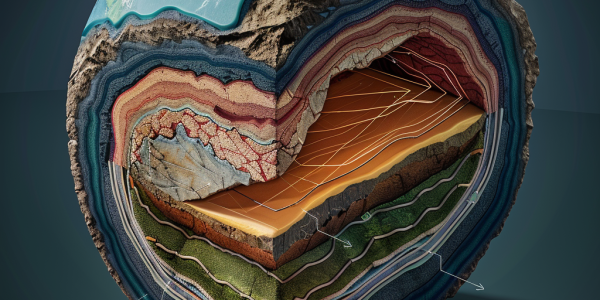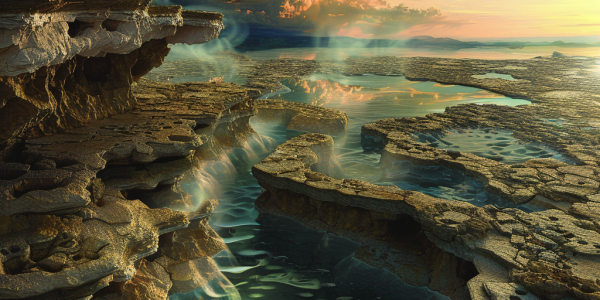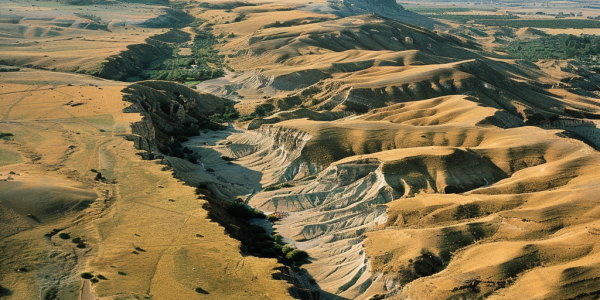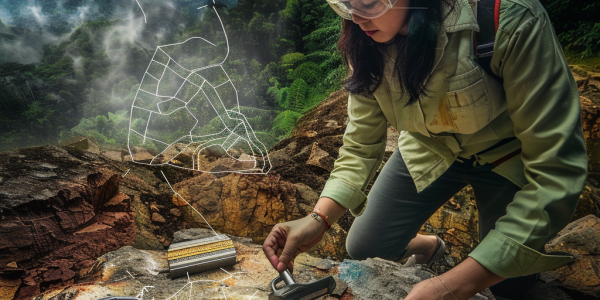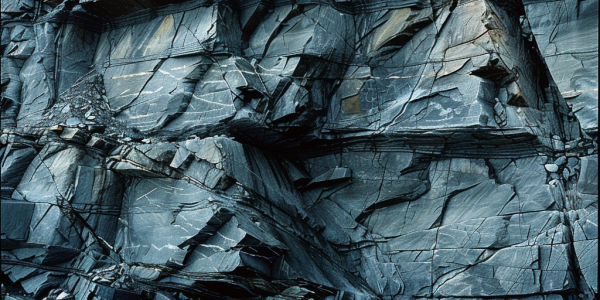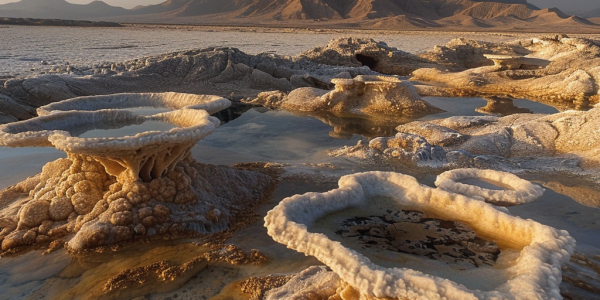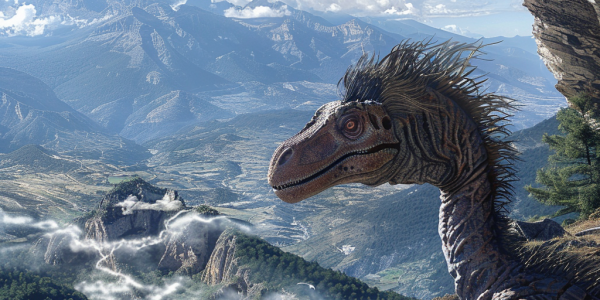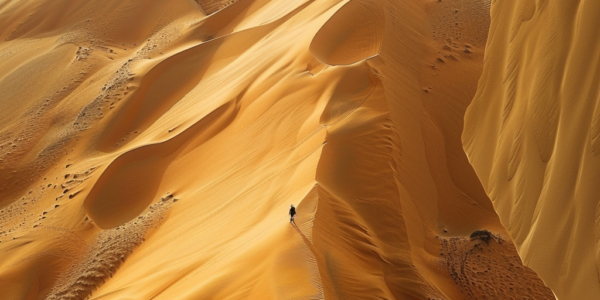Ancient Seafloor Discovery Reshapes Understanding of Earth’s Interior
Recent research from the University of Maryland has uncovered an ancient seafloor beneath the Pacific Ocean, reshaping our understanding of Earth’s interior. Utilizing advanced seismic imaging, scientists revealed a thickened area in the mantle transition zone, providing insights into geological processes like subduction. This groundbreaking study, led by Jingchuan Wang, highlights the potential of seismic techniques in uncovering hidden geological features and enhancing our knowledge of the Earth’s evolution.
Study Reveals Conditions for Life’s Origins on Earth and Beyond
A groundbreaking study published in eLife reveals that gas flow over water in early Earth environments may have facilitated nucleic acid replication, crucial for the emergence of life. The research highlights volcanic islands as potential cradles for life, suggesting simpler conditions for life’s origins and opening new possibilities for extraterrestrial life. Discover how this study reshapes our understanding of life’s beginnings and its potential beyond Earth.
Groundbreaking Study Reveals ‘Dripping’ Crust Phenomenon in Türkiye’s Konya Basin
Recent satellite data has uncovered a fascinating geological phenomenon beneath the Central Anatolian Plateau in Türkiye, specifically the Konya Basin, where Earth’s crust is experiencing a unique ‘dripping’ effect. This groundbreaking research led by scientists from the University of Toronto integrates advanced technologies and a multi-disciplinary approach to reveal the complex dynamics of plate tectonics and subsidence. The findings, published in Nature Communications, not only enhance our understanding of Earth’s geology but also have significant implications for planetary geology on celestial bodies like Mars and Venus.
Discovery of Ancient Pontus Tectonic Plate Under Borneo Reshapes Earth’s Geological History
Scientists have discovered a long-lost tectonic plate beneath Borneo, known as the Pontus plate, which is approximately 120 million years old. This breakthrough enhances our understanding of Earth’s geological history and tectonic movements. The research, led by graduate geologist Suzanna van de Lagemaat from Utrecht University, reveals new insights into the complex interactions that shaped the Asia-Pacific region. This significant finding not only reshapes tectonic narratives but also highlights the importance of ongoing geological exploration.
Groundbreaking Study Visualizes 1.8 Billion Years of Earth’s Geological Transformations
Recent research led by Xianzhi Cao reveals a stunning animation of Earth’s geological transformations over 1.8 billion years, showcasing tectonic plate movements and the evolution of supercontinents like Pangaea and Gondwana. This groundbreaking study, published in Geoscience Frontiers, emphasizes the critical role of plate tectonics in shaping Earth’s climate and supporting life, highlighting its importance in understanding contemporary challenges like climate change.
New Research Unveils Groundbreaking Insights into Earth’s Ancient Mantle
Recent research from the Smithsonian’s National Museum of Natural History reveals groundbreaking insights into Earth’s geological history through the study of 2.5 billion-year-old ‘time capsule’ rocks. These findings challenge long-held beliefs about the oxidation state of the Earth’s mantle, suggesting stability over geological time. This research not only enhances our understanding of Earth’s early processes but also connects to the broader narrative of life’s origins on our planet.
New Theory On Why We Are Alone In The Cosmos—Tectonic Plates
New research suggests that the presence of oceans, continents, and plate tectonics on Earth may be the reason for the lack of evidence of advanced extraterrestrial civilizations. Geoscientists from the University of Texas at Dallas and the Swiss Federal Institute of Technology propose a change to the Drake Equation, emphasizing the importance of plate tectonics in the emergence of intelligent life.
Discovery of Living Stromatolites in Saudi Arabia
Exciting new discoveries in paleobiology reveal the presence of stromatolites, the oldest geological record of life, in Saudi Arabia. These ancient structures, formed by algae carpets, played a crucial role in Earth’s history by contributing to the Great Oxygenation Event. The recent discovery of living stromatolites on Sheybarah Island has sparked excitement in the scientific community, shedding light on the origins of life on our planet.
Exploring the Geological Heritage of the Pyrenees
Explore the exceptional geological heritage of the Pyrenees, home to ancient titanosaur dinosaurs over seventy million years ago. Unearth remains of the Pararhabdodon isonensis dinosaur in Pallars Jussà, showcasing a distinctive bony crest on its head. The VIGEOCULT project by the University of Barcelona utilizes virtual and augmented reality technologies to offer a 4D geological museum experience, highlighting the region’s evolution over 550 million years.
Breakthrough Study Reveals Age and Rapid Formation of Star Dunes
A breakthrough study has revealed the age and rapid formation of star dunes, providing insights into Earth’s geological past. Scientists have solved the mysterious absence of star-shaped dunes from Earth’s geological history for the first time, dating one back thousands of years. The study by Aberystwyth University, Birkbeck, and UCL academics is the first to date how long it took a star dune to form and examine its internal structure. Star dunes, believed to be the tallest dunes on Earth, are also found elsewhere in the solar system, on Mars and on Saturn’s moon Titan. Despite being common today, star dunes have almost never been found in the geological record. Their absence has bemused scientists as past deserts are a common part of the history of Earth, preserved in rocks deep underground. Published in the journal Scientific Reports, the new study dated the foundations of a star dune in the southeast of Morocco known as Lala Lallia to around 13,000 years old.

